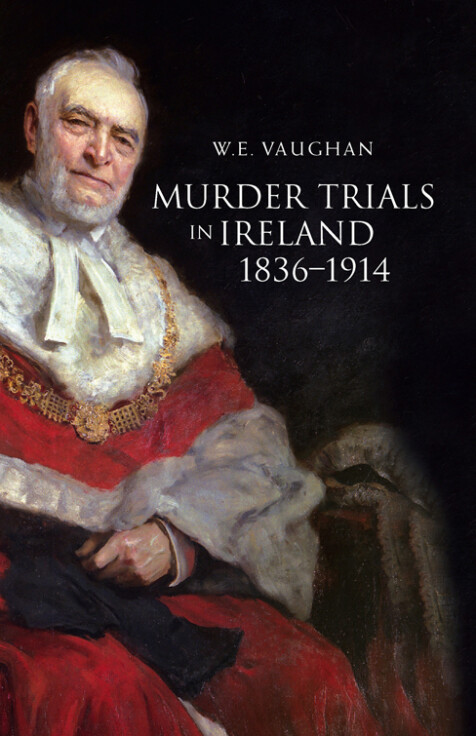Murder trials in Ireland, 1836–1914
W.E. Vaughan
The book describes how the courts dealt with murder, beginning with the coroner's inquest and ending with the conviction and hanging of the murderer. Between these two points the exquisite, almost balletic, procedure, of the courts and their officers is described, the Crown's case against the prisoner is analysed, and the prisoner's defence is discussed. Magistrates, policemen, crown solicitors, witnesses, jurors, judges, and hangmen make their appearances. The prisoners, whose silence before and during their trials was their most notable characteristic in the nineteenth-century courts, make their appearances too, but not as prominently as their judicial custodians, until they finally and briefly come into the limelight on the gallows. An implicit theme of the book is the apparent contradiction between the apparent simplicity of the courts' procedures and the complexity of the rules that determined their operation.
The books relies on a range of printed primary sources, such as newspapers, parliamentary papers, law reports, and legal textbooks, and on MS sources in the National Archives such as the Convict Reference Files.
W.E. Vaughan, senior lecturer in history in Trinity College, Dublin, is an editor of A New History of Ireland and author of Landlords and tenants in mid-Victorian Ireland.
The Irish Legal History Society examines, explores, and engages with all issues relating to the legal history of Ireland, from earliest time to the present day. Founded in 1988, the Society holds two Discourses annually, as well as publishing scholarly works on a range of legal history subjects.To find out about recent and future events and get information about how to join the Society, visit their website: http://www.ilhs.eu/


